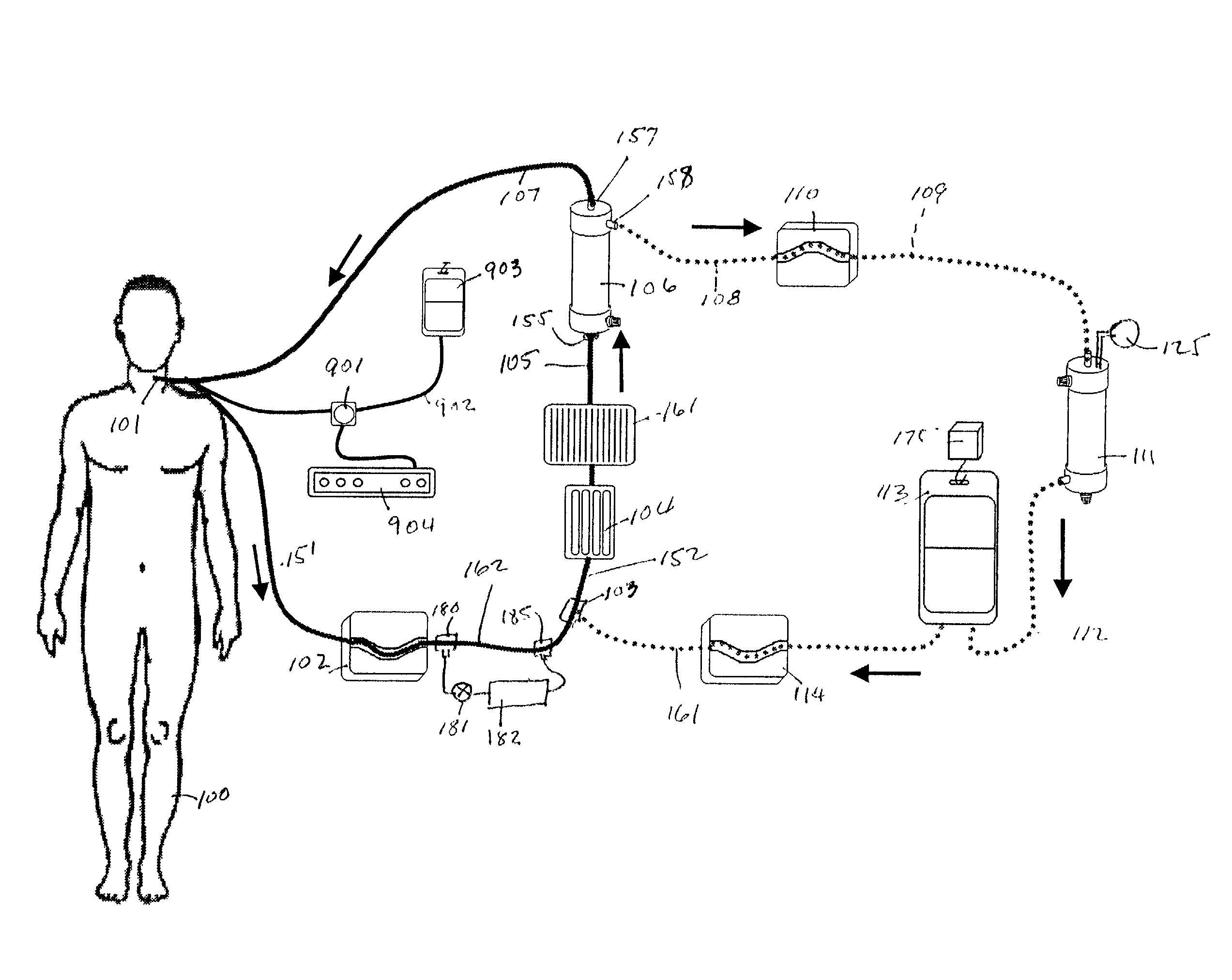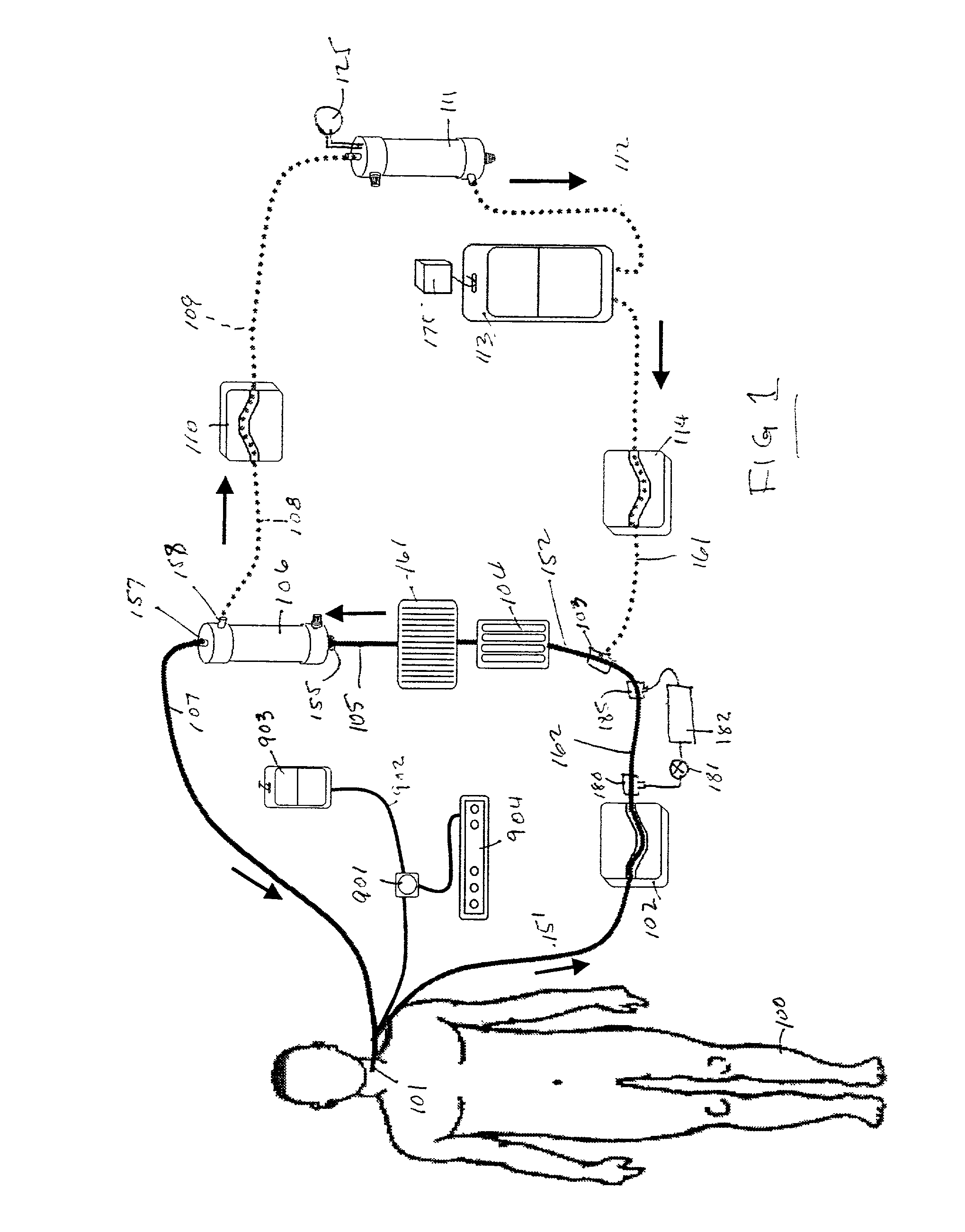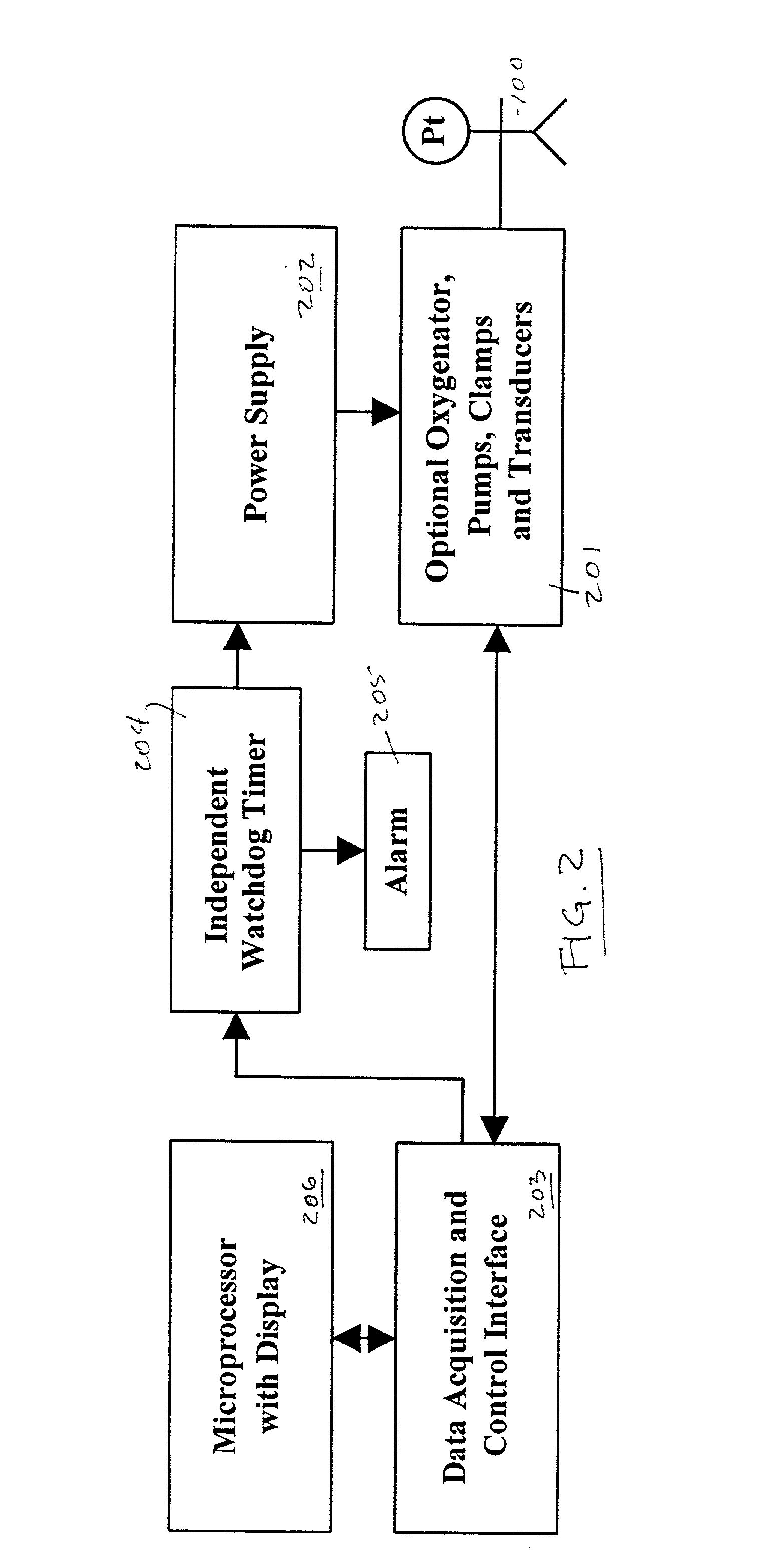Simplified cerebral retroperfusion apparatus and method
a retroperfusion apparatus and cerebral technology, applied in the field of ischemic cerebral tissues retroperfusion, can solve the problems of impracticality of cerebral retroperfusion, additional tissue necrosis, and inability to use stroke-type techniques, so as to reduce the time window available for patient treatment and mitigate the effect of reperfusion injury
- Summary
- Abstract
- Description
- Claims
- Application Information
AI Technical Summary
Benefits of technology
Problems solved by technology
Method used
Image
Examples
Embodiment Construction
[0024] Referring now to FIG. 1, there is shown one embodiment of the system defined in the instant invention. The primary circuit (shown in solid line) is an extracorporeal blood fluid path which is operative on the blood of the patient, whereas the secondary circuit (shown in dashed line) is an extracorporeal fluid path which is operative on the saline diluent and ultrafiltrate which has been filtered out of the fluid in the primary circuit. The system comprises a plurality of components, typically, connected by standard medical extracorporeal tubing and connectors. As such, the system may be attached to a patient 100 via cannulation 101 or it may be incorporated into extracorporeal circuitry already serving a patient such as in hemodialysis or cardiopulmonary bypass. The cannulation may be performed on either left or right internal jugular veins at the neck, or either left or right femoral veins at the thigh. The preferred insertion site is the right internal jugular vein (followe...
PUM
 Login to View More
Login to View More Abstract
Description
Claims
Application Information
 Login to View More
Login to View More - R&D
- Intellectual Property
- Life Sciences
- Materials
- Tech Scout
- Unparalleled Data Quality
- Higher Quality Content
- 60% Fewer Hallucinations
Browse by: Latest US Patents, China's latest patents, Technical Efficacy Thesaurus, Application Domain, Technology Topic, Popular Technical Reports.
© 2025 PatSnap. All rights reserved.Legal|Privacy policy|Modern Slavery Act Transparency Statement|Sitemap|About US| Contact US: help@patsnap.com



